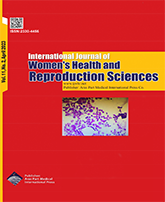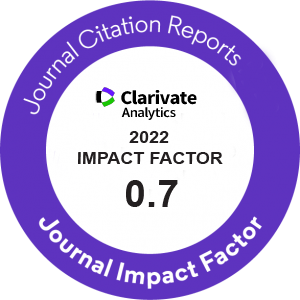| Original Article | |
| Successful Strategy of Pre-implantation Genetic Testing for Beta-Thalassemia (c.17A>T Mutation)-Hb E Disease Using Multiplex Fluorescent PCR and Mini-Sequencing | |
| Worashorn Lattiwongsakorn1, Natpat Jansaka1, Sirivipa Piyamongkol2, Tawiwan Pantasri1, Theera Tongsong1, Wanwisa Suriya1, Wirawit Piyamongkol1 | |
| 1Department of Obstetrics and Gynaecology, Faculty of Medicine, Chiang Mai University, Chiang Mai, Thailand 2Department of Pharmaceutical Sciences, Faculty of Pharmacy, Chiang Mai University, Chiang Mai, Thailand |
|
|
IJWHR 2023; 11: 058-064 DOI: 10.15296/ijwhr.2023.11 Viewed : 1958 times Downloaded : 1449 times. Keywords : Beta-thalassemia-Hb E disease, Embryo selection, Mini-sequencing, Multiplex fluorescent polymerase chain reaction, Pre-implantation genetic testing for monogenic disorders |
|
| Full Text(PDF) | Related Articles | |
| Abstract | |
Objectives: Hemoglobin E disease, c.26G>A variant of beta-globin gene, is the most common hemoglobinopathy in Asia. Compound heterozygotes inheriting Hb E disease and beta-thalassemia generate beta-thalassemia-Hb E disease with severe anemia. This study aimed to develop a pre-implantation genetic testing for monogenic disorders (PGT-M) protocol for beta–thalassemia (c.17A>T mutation)-Hb E disease (c.26G>A mutation) using multiplex fluorescent polymerase chain reaction (PCR) and mini-sequencing. Materials and Methods: bthalw1 primers were used to amplify a beta-globin gene fragment covering both mutations, i.e. beta–thalassemia (c.17A>T) and Hb E disease. D21S11 microsatellite marker was included for contamination detection. Novel mini-sequencing primers were designed and tested for detection of both mutations. Results: Pre-clinical work up of the optimized PGT-M protocol using 20 single buccal cells of a heterozygous subject showed 100% amplification efficiency and 0% allele drop out (ADO) rate for both primers. In clinical PGT-M cycle, 15 embryos were subjected to biopsy. The results showed two normal, one heterozygous for beta-thalassemia, six heterozygous for Hb E disease, one affected for beta-thalassemia-Hb E disease and five with ambiguous results. Two normally diagnosed embryos were chosen for transfer, one singleton pregnancy was obtained. A healthy baby boy was resulted. Postnatal testing confirmed PGT results. Conclusions: Novel PGT-M protocols for beta-thalassemia-Hb E disease using multiplex fluorescent PCR and mini-sequencing were developed and described here. The protocol was applied in a clinical PGT-M cycle and gave rise to one successful pregnancy and consequently a healthy baby boy. Mini-sequencing was proved to be rapid, accurate and cost-effective protocol for PGT-M. |
Cite By, Google Scholar
Google Scholar
PubMed
Online Submission System
 IJWHR ENDNOTE ® Style
IJWHR ENDNOTE ® Style
 Tutorials
Tutorials
 Publication Charge
Women's Reproductive Health Research Center
About Journal
Publication Charge
Women's Reproductive Health Research Center
About Journal
Aras Part Medical International Press Editor-in-Chief
Arash Khaki
Mertihan Kurdoglu Deputy Editor
Zafer Akan























